Voron has gained a lot of popularity in the last few years. Makers really appreciate custom 3D printers and Vorons have become the go-to devices in this regard.
Started in 2015, the Voron project had the main objective of building a (somewhat) budget-friendly 3D printer that was entertaining to put together and capable of working nonstop for days. From a one-person idea, Voron has evolved into a community phenomenon with thousands of machines built all over the world and with lots of modifications.
The Voron 2.4 and the Voron Trident are the biggest printers in the collection. Both of them are designed to print at high speeds without compromising quality, and thanks to the enclosure they’re able to print even technical materials such as nylon and PC.
The Voron Trident is the evolution of the Voron 1, which arrived at version 1.8 and was then dismissed. The defining trait of this model is the Z motion system; in fact, it uses a bed supported at three points, as the name states. On the other hand, the Voron 2.4 is the fourth iteration of the Voron 2. The current version is the Voron 2.4 r2. Its distinguishing feature is also the Z motion system, supported at the four angles, but we’ll dive deeper into the motion systems shortly.
Now let’s begin our journey into the comparison of those two awesome machines in case you’re wondering which one would be the best fit for your needs!
At a Glance
Features
One of the best parts of Voron 3D printers is the customizability that they offer.
Although Voron offers the documentation to assemble and configure your machine, the instructions have been designed for a basic configuration, so based on what elements you want to add to your machines, you may need some tweaks. In fact, there are tons of options out there to choose from for every piece you want to put on your machine. Motherboards, different kinds of bed leveling sensors, a long list of hot ends… you have virtually unlimited alternatives.
Even if they’re so customizable, there are still significant differences between the two machines. First of all is the design. As we have said before, both of them have a characteristic Z motion system which serves as the defining trait. Because of this, the build volume changes. Additionally, the Trident can handle the materials that need more cooling a little bit better, such as PLA, because it is possible to add big fans at the edges of the build plate.
With the main differences presented, let’s dive into their features!
Design
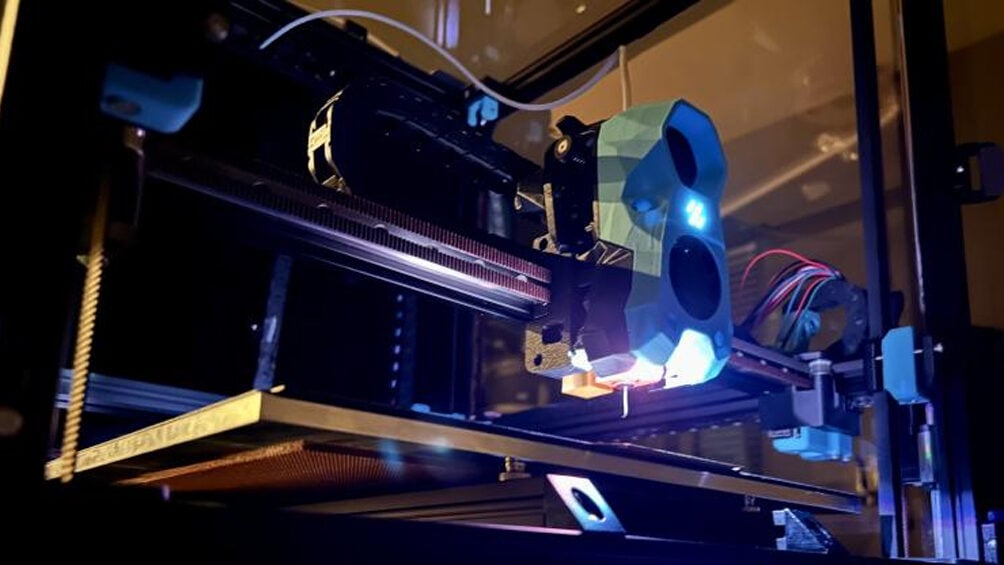
This is arguably the most important factor if you’re choosing between the 2.4 and the Trident. They both feature a CoreXY design, which is a motion system that uses a long and precise belt path thanks to which the movements on the X- and Y-axes are controlled by two motors working together, the A and B motor. Cartesian printers, on the other hand, control every axis with a single motor.
Although they both use the CoreXY system for the movements on the horizontal plane, on the vertical one they propose their unique solutions. The Voron Trident features a fixed gantry and a bed that moves along the Z-axis thanks to three independent motors. Because of this design, the Z-axis height is limited to 250 mm due to the available integrated lead screw steppers. On the other hand, the Voron 2.4 offers a static bed with a flying gantry, controlled by belts running on four individual motors.
This distinction leads to some differences. In the first place, the Trident will have a limited Z volume because of the integrated lead screw motors. Additionally, as we’ll see shortly, the 2.4 can be a little bit more difficult to assemble.
Both of them feature linear rails on all of the axes. For this reason, the Voron 2.4 tends to be more expensive than the Trident, since it uses more and longer linear rails. They are both designed to be enclosed, so you’ll be able to print more technical materials with them, such as nylon, PC, carbon fiber and glass fiber composites, and so on.
Build Volume
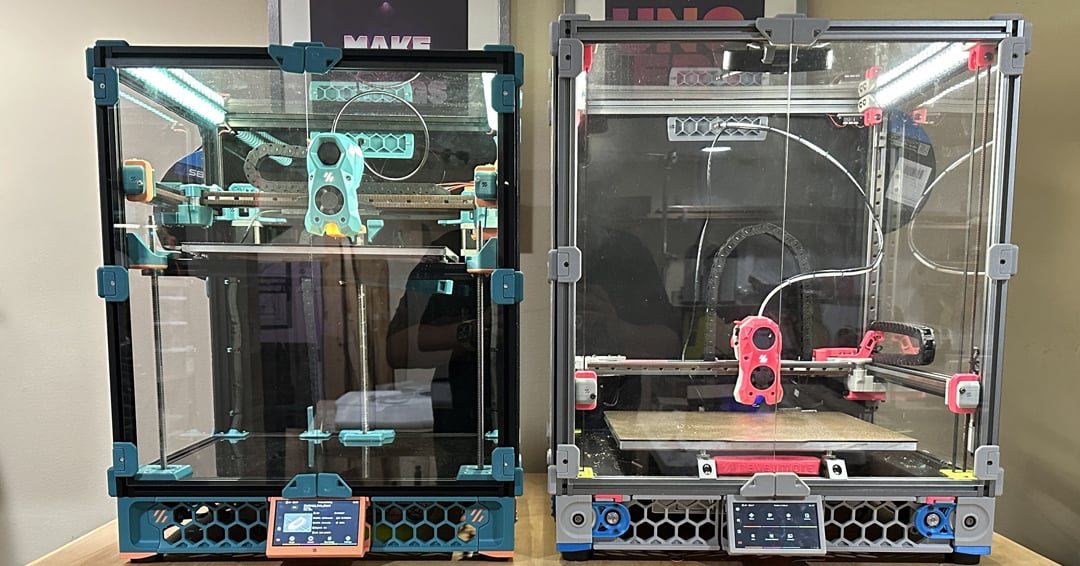
Both of the models were designed to be built for the maker’s desired size. That said, even if you can choose your input custom dimensions and create a specific BOM for the project, there are three officially supported sizes for both the 2.4 and Trident.
For the Voron 2.4:
- 250 x 250 x 220 mm
- 300 x 300 x 280 mm
- 350 x 350 x 330 mm
For the Trident:
- 250 x 250 x 250 mm
- 300 x 300 x 250 mm
- 350 x 350 x 250 mm
These combinations should match most makers’ needs who aren’t looking for a massive build plate. As you can see, the Trident is limited in the Z-axis because it uses integrated lead screw stepper motors.
The smallest build volume is bigger than the Ender 3’s, which offers 220 x 220 x 250 mm, so it’s quite a competitive plate. If you tend to print bigger models, maybe you should consider the 350-mm version of the model of your choice.
Extrusion

Now that we’ve chosen the size that we need, we can proceed with the building.
Although Voron offers a Bowden setup too, the most common choice for these kinds of machines is a direct extrusion system, which mounts the motor on the printhead itself. Voron has designed its own direct extrusion printhead, the well-known Stealthburner. Its predecessor is the Afterburner, another direct extrusion toolhead.
The Stealthburner can also be installed on other 3D printers – you only need the correct linear rails. It features a 5015 fan for good cooling and it was designed to integrate the motor in a unique piece for the printhead. You can also add LEDs for style!
What about the hot end? While the extruder is standard, the hot end is up to you. You can choose your favorite hot end from a long list of options, or you can create your own adaptor if it doesn’t exist already. The most common choices are the Phaetus hot ends, such as the Dragon or the Rapido models, or the Slice Engineering Mosquito if you’re looking for speed. On the other hand, for convenience, a lot of makers have opted for the Revo ecosystem, a really handy hot end that makes nozzle swap easy and fast.
Build Plate
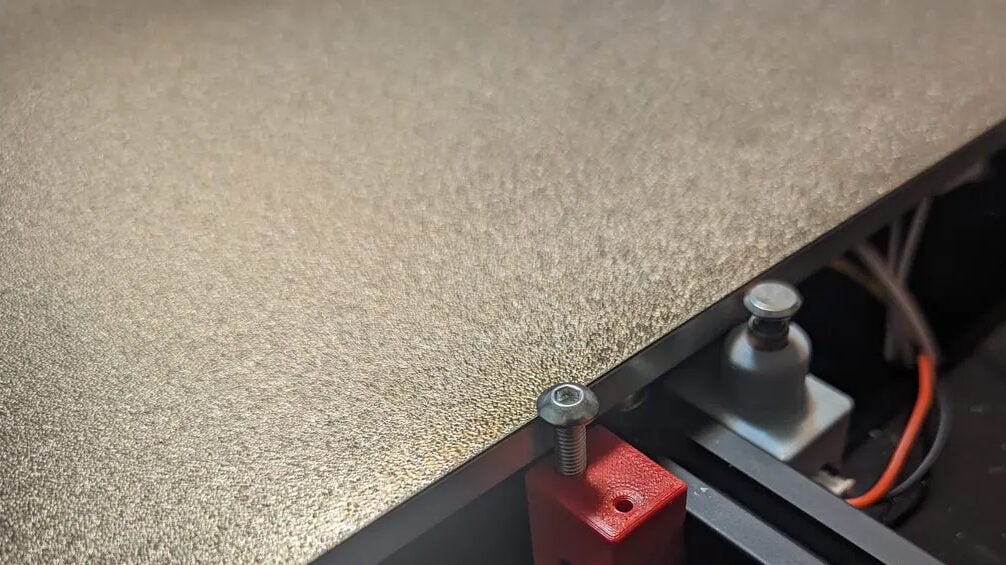
Now that we have settled the printhead, let’s move to the print bed. Although you can use a glass bed, the most popular choice is arguably the flexible build plate. It’s really convenient to clean with IPA and it’s super handy to release the printed parts from it with a little flex.
Some of the most popular build plates are the Fabreeko PEI, WhamBam, and HoneyBadger textured PEI. Each one has its own characteristics. WhamBam leaves a smooth surface on the first layer, similar to the glass bed. Fabreeko and HoneyBadgaer plates are similar; both brands are known for being premium and high-quality pieces for Voron printers. These plates leave a cool texture on the bottom of your part.
They’re all durable so choose your preferred one!
Bed Leveling

On this kind of printer, bed leveling sensors are absolutely necessary because of the nature of the Z motion systems. While the bed leveling on the Trident will align the bed to the toolhead, on the Voron 2.4 the bed leveling will make the quad gantry system straight.
As for the other elements, you can choose between a long list of options. The most popular devices have been the Euclid and the Klicky probes. They’re similar since they both use a magnet system to attach the probe to the printhead when you want to level your printer but can park it when you’re printing.
Really light and simple to install, these two systems have been the go-to for years in Voron printers but now a new bed leveling sensor is gaining popularity. Voron has designed the Voron Tap, a system that uses an endstop installed on the printhead to probe the bed with the nozzle. In this way, you can automatically set the Z offset too! It’s a really convenient and unique system worth trying.
Mainboard
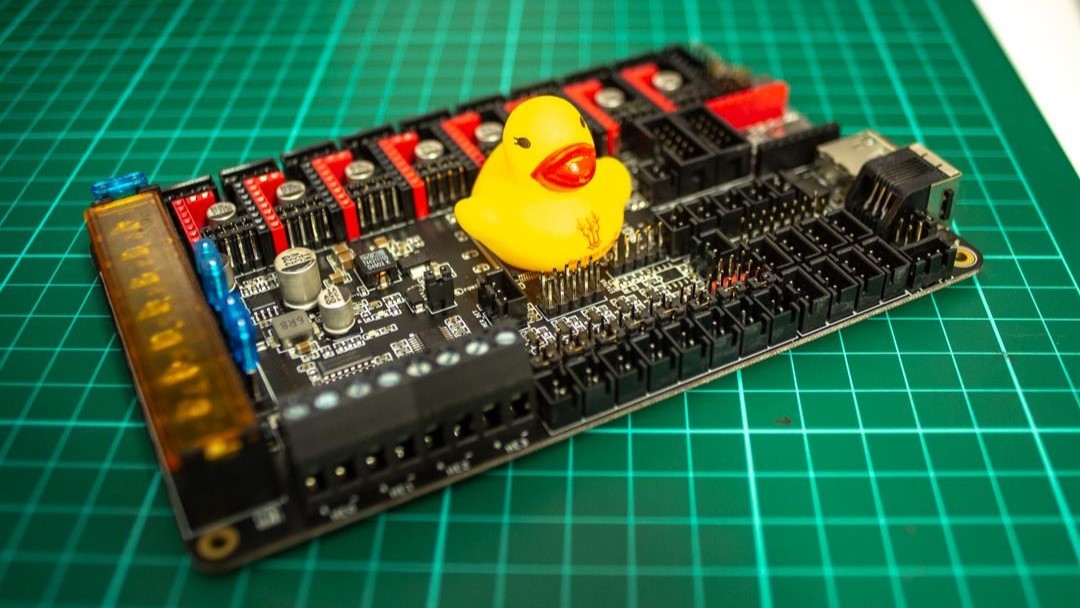
Now let’s talk about the brain of our machines: the motherboard. The motherboard controls every component of our 3D printer, and in this case, is helped by a single-board computer (SBC) on which you’ll install Klipper. This firmware is well known in the makers’ world because it has gained a lot of popularity because of the possibilities of custom 3D printers, such as input shaping, pressure advance, and the numerous plug-ins to further customize your printer and meet your needs.
Once you’ve got Klipper on a board, you have to compile a configuration file for your motherboard. You have numerous options, but you should know that not all the motherboards have precompiled configurations. On the Voron site, files for the most popular control boards, such as the BTT Octopus, the Fysetc Spider, and the SKR line have been shared. This can help avoid some headaches.
When you’re choosing drivers, the most common option is TMC2209, a powerful and quiet driver that plenty of makers have installed on their Voron machines.
Obviously, neither of these printers is for beginners, but for those who want to gain more knowledge about the 3D printing world after a little bit of practice, they’re perfect. There are a lot of guides about the Voron firmware configuration and installation, so you should definitely be able to make your machine work!
Software
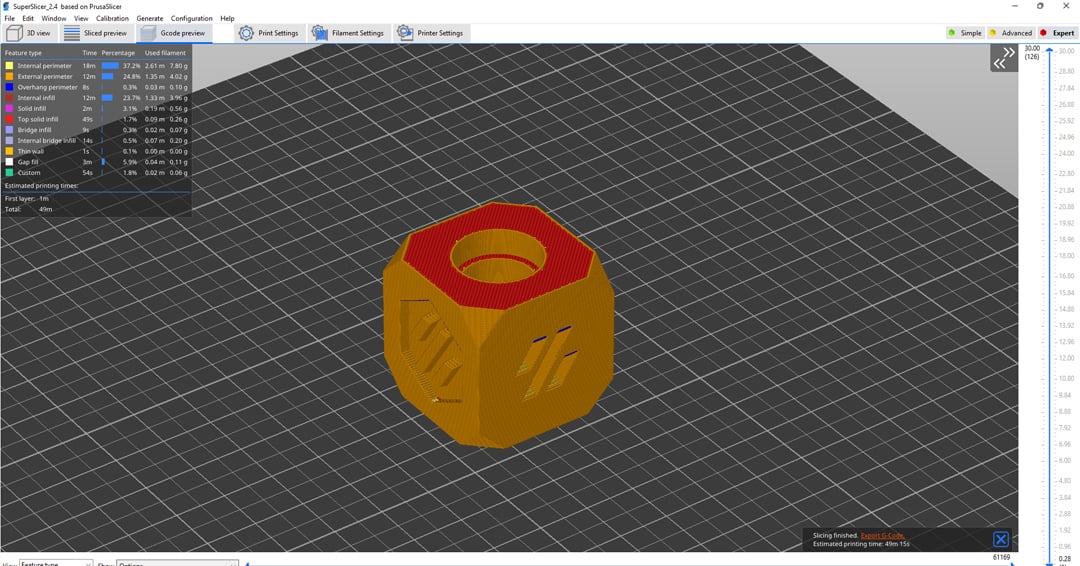
When you have everything installed, you can begin to print, so let’s see what software we can use!
At the moment there are only two officially supported slicers: UltiMaker Cura and SuperSlicer. Both of them are well-known in the 3D printing world and offer lots of functionalities. You can obviously configure other slicers to work with your Voron printers, such as PrusaSlicer, Simplify3D, or Slic3r. Pay particular attention to PrusaSlicer since it can present some problems with recognizing Klipper’s PRINT_START macro.
A new slicer that’s gaining popularity is OrcaSlicer. Particularly appreciated for its built-in calibration tests, it offers some profiles for Voron printers. With a little bit of tweaking, it can be a great alternative.
UI

Let’s see how we can control our machine. Even in this case, you can choose your preferred option. You can use an LCD screen or a touchscreen. Since these printers run on Klipper, you can also control them from your favorite web interface, be it Fluidd, Mainsail, or OctoPrint.
Pay attention to the touchscreen type when you’re shopping, since you’ll need an HDMI screen that you’ll use with KlipperScreen. On the other hand, all kinds of LCDs will work with this firmware and you won’t require as much configuration as for the touchscreen.
Since you can control your machine from the web interface, the screen isn’t really needed on those machines but it can be a convenient addition since it lets you control almost every option present on the web interface.
Price
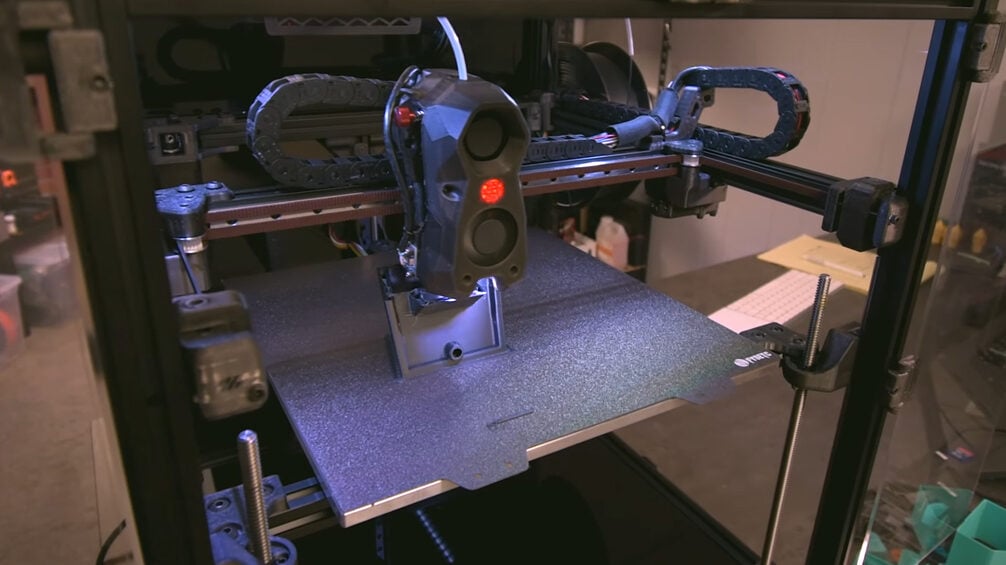
This is another factor that can really affect the user’s choice.
As we’ve said before, the Voron 2.4 requires more and longer linear rails, making its price a little bit higher than the Trident. There are a lot of kits that you can choose from or you can even source the parts yourself, so the price may vary drastically based on your decision.
Let’s look at the most popular kit, the LDO one, and a cheaper kit, the Fysetc one.
For the LDO kit, we’re talking around $1,600 and $1,700 for the bigger versions of the Voron 2.4 and around $1,400 for the smallest version, while the bigger sizes of the Trident kit are around $1,500. On the other hand, for the Fysetc kit, the prices are more or less $750 for the bigger versions of the Voron 2.4 and a little less than $600 for the 300-mm and 350-mm Trident.
There’s definitely a big difference between the price of the two kits and the two models. Those printers are on the premium side of the spectrum of retail machines, but they’ll definitely last a long time. We should also highlight that the kit offers a basic configuration, but usually, users will improve constantly their machines with other upgrades. Pay particular attention to the list of components because almost all of the kits don’t come with printed parts.
LDO has a better reputation regarding the quality of the materials and it offers some interesting mods that aren’t included in the basic configuration of the Voron, such as LED and NeverMore, that’s because the price is much higher. On the other hand, the Fysetc kit is gaining popularity and is being appreciated by the community since it includes the hot end and it offers also the Raspberry.
Verdict
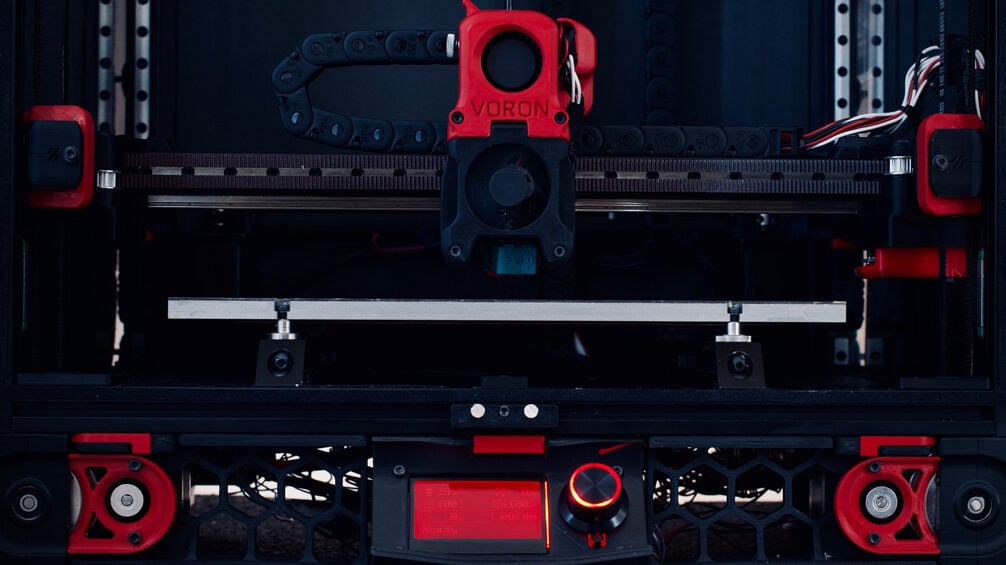
So which of them should you choose? There are some considerations to keep in mind.
Firstly, the Voron Trident is easier to build and maintain than the 2.4 because of its Z motion system. Belts tend to degrade over time faster than lead screws and are a little bit more difficult to assemble. So the Trident is without a doubt more suited for beginners.
But if you have already experience, you should choose based on your preferred motion system the one that’s the most fascinating for you. You could also consider another important factor: the price. As we’ve seen, Trident tends to be less expensive.
In the end, the Trident will definitely be an appropriate choice for most users but they’re both impressive machines that will offer you a fun time!
License: The text of "Voron Trident vs Voron 2.4: The Differences" by All3DP is licensed under a Creative Commons Attribution 4.0 International License.
CERTAIN CONTENT THAT APPEARS ON THIS SITE COMES FROM AMAZON. THIS CONTENT IS PROVIDED ‘AS IS’ AND IS SUBJECT TO CHANGE OR REMOVAL AT ANY TIME.


